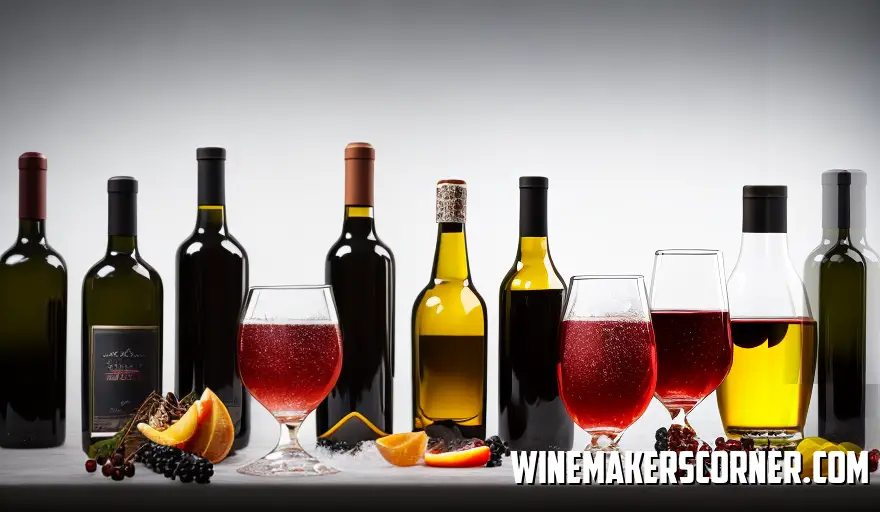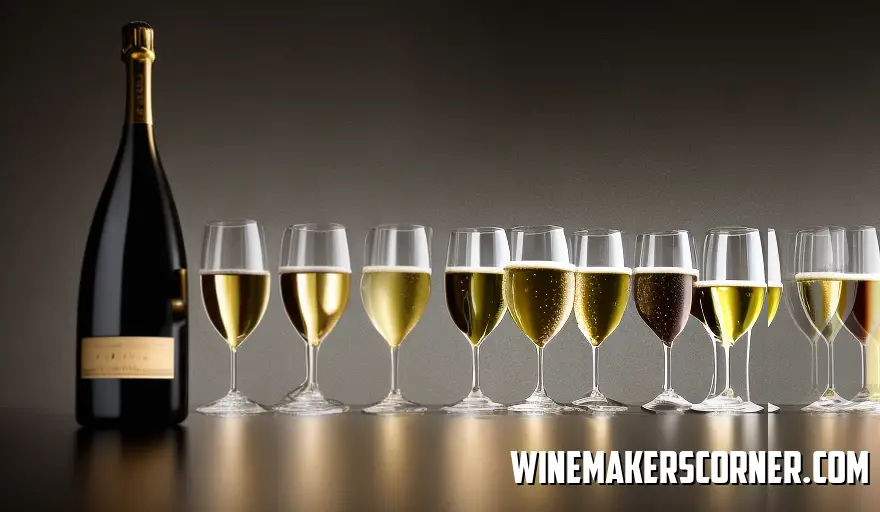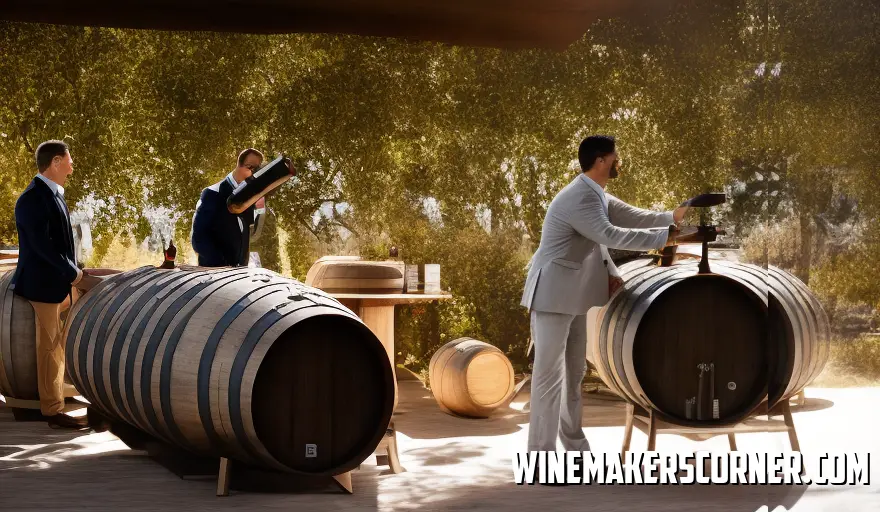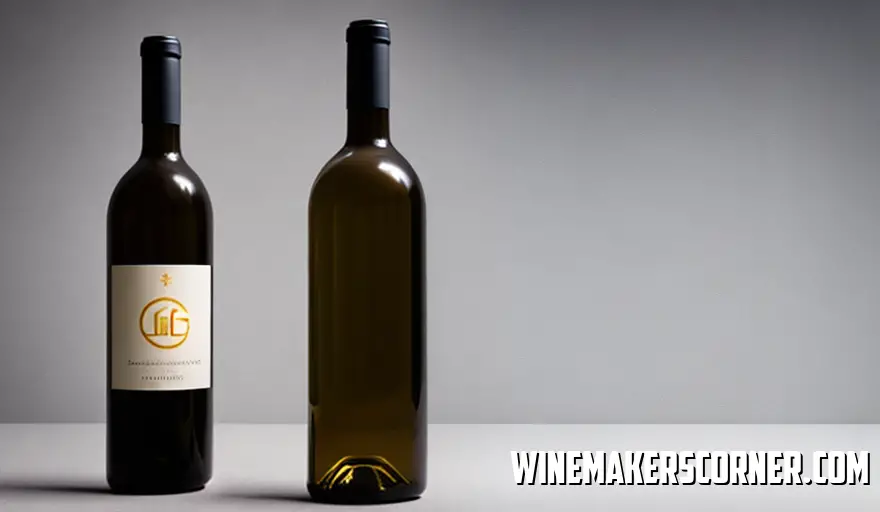As we all know wine has a special place in our hearts with its enchanting powers to create an atmosphere of love and joy around us. We can get so lost admiring its delightful light and color dance that its easy to forget that there is much more to the final product than just the liquid in our glass. Do you know about the important role that filtering plays in making sure each sip is perfect? Here we will unravel the mysteries of clarity, stability, and flavor while reflecting on why this process is so crucial yet surrounded by controversy.
Table of Contents
Understanding Wine Filtering
Do you ever wonder about the mysterious process of wine filtering? Its an essential step in winemaking that not only enhances visual appeal but also contributes to stability and longevity. Lets delve deeper into this fascinating process and uncover some secrets.
At its core wine filtering aims to eliminate undesirable particles from the liquid – think dead yeast cells or organic materials like grape skins – that might cloud its appearance or introduce spoilage causing microorganisms. Winemakers utilize various methods for filtering; one popular technique involves using sheets made from cellulose fibers or synthetic materials to trap particulate matter as the wine flows through them (pad filtration). Another commonly used approach employs semipermeable membranes (cross flow filtration) for separating solids from liquids.
Of course every winemaker has their unique way of tackling this procedure based on desired outcomes and personal preferences – but no matter how you do it effective wine filtering is critical for producing a high quality final product. The world of winemaking has varying preferences on wine filtering with some advocating for gentler methods like racking or gravity settling while others choose more rigorous techniques like sterile filtration for highest clarity and microbial stability. But the contentious issue remains: does filtering alter wine character and complexity?
Supporters of unfiltered wines caution against removing too many impurities, which could eliminate desirable flavors or aromas resulting in a less expressive final product.
Conversely others argue that proper filtration not only preserves these characteristics but also contributes to overall stability. Throughout winemaking traditions both old and new wine filtering plays an indispensable role in creating exceptional wines. Each winemakers skill set is vital in crafting beautiful wines that showcase their individual vision while allowing enthusiasts worldwide to enjoy them fully.
The Importance of Clarity and Stability
The world surrounding wine beckons with its charm and enigmatic qualities; one such mystery involves the process known as wine filtering. This vital step serves as one element in crafting those tantalizing bottles we cherish so much – ensuring they have both clarity and stability at all times. Clarity proves paramount as it captures our senses even before we taste the wine. A clear pour sets an ideal stage for the expected memorable and exquisite tasting experience leaving us with a lingering feeling of satisfaction.
Stability also plays a critical role; any instability could lead to unwanted flavors or odors making the drink less appealing to everyone, including wine connoisseurs and casual drinkers. However stable wines present their intended characteristics over longer periods – allowing us to appreciate the winemakers artistry in every sip. To attain both clarity and stability throughout production winemakers utilize several filtering techniques.
Winemakers utilize various methods to ensure their finished product is free from particles that may cause cloudiness or spoilage. One such method involves filtering wine through a series of filters that catch things like yeast cells and grape remnants. Alternatively gravity can separate solids from the liquid naturally through sedimentation though this process requires patience.
Fining agents can also be added to make separation easier during subsequent filtration or sedimentation steps. The method of choice depends on factors like clarity level and flavor profile demonstrating the art and science needed to create perfect wine. While not the most glamorous aspect the filtering process plays an important role in crafting the exquisite elixirs we’ve come to appreciate.
Different Wine Filtering Techniques
Wine filtration is crucial for creating an excellent-quality bottle of vino with perfect clarity and taste; however, it often remains somewhat shrouded in mystery for many enthusiasts! In essence, this step separates clear liquid from impurities and sediments resulting in refined flavor profiles and visually stunning wines! There are distinct methods that vintners employ to filter their wines like Pad Filtration, using cellulose pads stacked as filters where wine flows through layers while unwanted particles get left behind! While it’s cost-effective with customization options galore, it requires skillful execution to preserve desired flavor notes! To conclude our exploration into filtering techniques used by winemakers – lets discuss Centrifugation. This technique relies on high speed spinning to separate solid particles from wines while leaving clear liquid behind at the center of its rotation.
Though an efficient method with swift results for winemakers it may also lead to some drawbacks such as increased energy consumption or even loss of intricate aromas from wines.
In summary – filtration techniques play an important role in deciding the final outcome of a wine. Factors such as cost effectiveness, preservation of unique flavors or desired clarity levels influence winemakers’ choices with each method offering a unique sensory experience for wine lovers alike!
Choosing the Right Filter for Your Wine
Selecting an appropriate filter during winemaking significantly influences not just how it appears but also its taste, aroma and overall quality upon completion. To choose an appropriate filter that suits your cherished creation aptly requires exploring several crucial factors closely. For instance: determine what kind of wine you are making; red wines typically need coarser filtration than white ones because they contain more tannins and sediments that don’t require heavy filtering yet retain their distinct characteristics.
Besides this primary consideration is identifying where in the filtration process you are working because each step demands unique filters adapted for removing different-sized particles efficiently from primary through secondary stages up until final stages where it gets completed fully realized successfully according to goals set out beforehand by those involved from start-to-finish undertaken carefully with great care throughout all its various iterations till completion stage complete successfully in every possible manner imaginable without problems arising at any point along the way whatsoever or hindering progress achieved thus far. When it comes to selecting a wine filter there are multiple factors that demand careful consideration. Among them is pore size – if a brilliant finish is essential then opt for fine filters finished with smaller pores; however keep in mind that this type of filtration may impact desirable elements present within the wine itself.
Material also plays an influential role; various options exist including paper sheets or cartridge filters made from polypropylene or cellulose fibers along with diatomaceous earth (DE). Its important to carefully weigh each materials potential pros/cons concerning cost effectiveness and ability in removing unwanted substances. Lastly assess whether any potential new additions will effectively integrate alongside current equipment; certain filters necessitate specific pumps/housing systems to function properly. Overall evaluating nuances related to filtration stage,pore size,type of wine being filtered, material as well as compatibility with existing equipment is crucial in selecting the perfect wine filter.
By doing so you’ll achieve optimal results while maintaining its unique character and charm.
The Debate: Filtered vs Unfiltered Wine
The debate surrounding wine filtration has been raging among vintners for what seems like forever; some swear by it while others reject it completely. This enduring argument between filtered versus unfiltered wines stems from both tradition and innovation – so lets take an informative journey through this captivating process while exploring its benefits and drawbacks. At its core wine filtering involves extracting unwanted sediments like dead yeast cells or grape particles from the liquid – resulting in an appealingly clear end product with less potential for spoilage due to microbial activity. Supporters argue that stability and longevity are key factors here making filtered wines more consumer friendly.
In contrast those who oppose filtration insist that it strips away essential flavors integral to a wines profile – with natural antioxidants like lees (the remnant of yeast cells) providing additional value in unfiltered wines. When it comes to wine filtering practices personal choices play a big role–some revel in the bold characteristics that come with drinking an unfiltered wine while others prefer their wines polished through filtering processes for an elegant finish. Nevertheless recent technological advancements have begun addressing this divide by introducing gentle filtering methods designed specifically for preserving subtleties–all while ensuring clarity and stability. One such technique thats garnered attention is the cross flow filtration process, which employs semi permeable membranes to retain larger wine particles while still maintaining aroma and taste.
Ultimately whether you go unfiltered or opt for filtering is up to your distinct palate preferences. As you indulge in your next glass of wine take a moment to ponder on the fine art behind each method–a blend of age old wine traditions and innovative solutions from modern day technology.
Timing Matters: When to Filter Wine
Winemaking may be an art form, but certain scientific elements dictate success – timing being one of them!
Filtering wine is crucial- enhancing clarity, stabilizing microbes and refining flavor all contribute to sensory appeal. However – when’s the right time?
Filtering at the wrong moment can have disastrous effects on taste and quality. During fermentation, yeast needs time to convert sugar into alcohol without interruption (2-4 weeks).
Racking – transferring wine from one container to another while leaving sediment behind – typically follows once fermentation concludes; allowing an ideal opportunity for initial filtration before bottling.
So remember: Timing truly matters when filtering your wine – don’t rush it! When crafting fine wines that deliver top notch flavor profiles every detail counts – including proper filtration techniques at various stages of production. By removing larger particles and excess yeast cells early on in the process winemakers prevent contamination that may impact the final taste of the product itself later on down the line. At the same time though – over filtration can inadvertently lead to stripping away flavor nuances that contribute positively towards aroma and taste experiences upon consumption.
As aging progresses (anywhere from months to years) closely monitoring progress becomes vital – particularly wines with high tannin content and whites susceptible to oxidation. Additional filtration during this stage can help optimize the wine to its fullest potential.
Finally as the wine transitions towards bottling, making final filtration decisions based on desired style or shelf life requirements ensures that each bottle meets strict quality standards for consumer enjoyment.
Effects of Filtering on Flavor and Aroma
The realm of wine is captivating – it brims with secrets and complexities waiting to be explored. And one such enigma lies in understanding wine filtering – an often-misunderstood process with deep implications on taste and aroma profiles of culinary masterpieces.
At its core, wine filtering removes unwanted particles from liquids settling during fermentation or aging – including yeast or bacteria – for clear visuals and improved longevity characteristics over time. Nonetheless, there’s more to this filtration technique than meets the eye (or rather palate).
Its impact can positively refine flavor profiles by removing impurities but also hinder desired traits if excessively applied.
In this article therefore we delve deeper into the effects of filtering on these sensory aspects. Wine enthusiasts in this community favor natural or unfiltered varieties – they claim leaving certain particles imbues their creations with unique character traits undetectable after filtration alone. Additionally, not all types require filtration; reds tend to be less susceptible than whites due to inherent tannins offering stability without aggressive clarification methods’ neediness. Thus, finding a balance between filtering and allowing nature’s hand to guide the process can elevate an average bottle into an extraordinary one.
This highlights how crucial it is to understand filtering’s impact on taste and aroma, a key component in determining wine quality for both casual drinkers and connoisseurs alike. As we delve deeper into the secrets of wine, understanding filtering is just one piece of this fascinating puzzle. Gone are those days when artificial intelligence was seen as an unrealistic prospect only found in sci fi movies. In todays world however such technological advancements have become very commonplace; from self driving cars that can sense their environment and navigate accordingly without human intervention or even smart home devices like alexa that can manage our day to day lives with simple voice commands.
Accordingly a recent report from IDC highlights that the global spending on AI systems will attain an estimation of $97.9 billion by 2023 which further underscores its significance across different sectors including healthcare retail finance among others. Nevertheless just as every substantial achievement comes with some shortfalls; similarly there exist pertinent concerns about job security being compromised coupled with ethical dilemmas arising from unregulated decision making algorithms facilitated by AI in various sectors. In this light it is necessary for stakeholders within the field of AI together with regulators alike to critically assess these ethical implications while simultaneously implementing necessary policies and regulations.
In conclusion the profound words espoused by Stephen Hawking remain relevant here:”The rise of powerful AI will be either the best or the worst thing ever to happen to humanity.” It is incumbent on us as a society to ensure that AI is leveraged for the greater good of humanity.
Home Winemaking: DIY Filtering Tips
Crafting homemade wine allows enthusiasts to experiment with unique blends of fruits and spices while providing powerful gustatory experiences. Wine filtering plays an integral role in delivering desired tastes and longevity of the final product. In this piece we explore some useful DIY methods that will help you filter your homemade wines to perfection. Firstly lets understand why filtration cannot be overlooked in winemaking.
Unfiltered wines may contain sediments or impurities that can negatively impact taste and clarity. By removing these elements through proper filtration methods you ensure an elevated drinking experience. Gravity based filtration systems are a popular choice for many home winemakers – a simple and affordable solution for small scale production.
All you need to do is position a clean container beneath your wine filled vessel and siphon the liquid through an appropriate medium such as cheesecloth or coffee filters.
For optimal efficiency and precision in wine filtration investing in dedicated filter systems with cartridge filters or plate filters is recommended. These devices guarantee superior clarity and stability in your final product – ensuring that every sip of your homemade wine is nothing short of extraordinary quality.
Serious home vintners know that investing in high quality filtration systems can elevate their wine to professional levels. While more expensive upfront these systems deliver impressive results for those dedicated to crafting exceptional wines at home. Timing plays a crucial role when filtering homemade wines for optimal outcomes – allowing enough time for sedimentation after fermentation is complete (usually several weeks or even months) before initiating the filtration process is key.
Cleanliness during any winemaking step cannot be overstated, but especially during filtration – meticulously clean and sanitize equipment beforehand to prevent any contamination from tainting your final products taste and quality. With practice, patience, and attention to detail learning how to master DIY filtration methods will enhance the quality and flavor of your homemade vino beyond measure.




